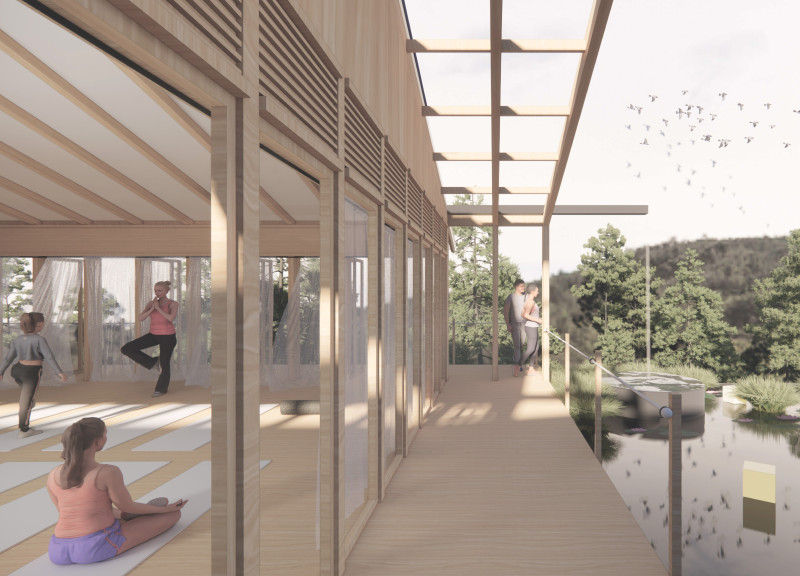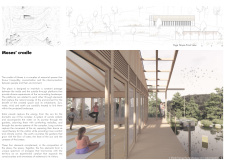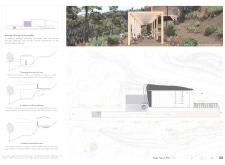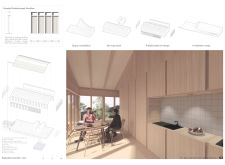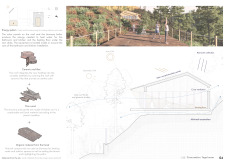5 key facts about this project
Moses' Cradle is an exploration of how architecture can enhance the connection between people and nature. Located in an inviting outdoor landscape, the design promotes tranquility and focus. The overall concept centers on creating a smooth interaction between indoor and outdoor spaces, inviting people to engage meaningfully with their surroundings.
Integration of Natural Elements
The design emphasizes a continuous flow of natural elements. Elevated platforms offer views of the valley, allowing users to appreciate the beauty of the landscape. These platforms create various experiences and invite exploration, while pathways provide smooth movement throughout the site. This accessibility enhances the interaction between the built environment and nature.
Architectural Strategies
The project highlights four key elements: sun, water, wind, and earth. Solar panels are a core feature, supplying energy and demonstrating a commitment to sustainability. Water channels weave through the gardens, guiding flows and adding a visual and auditory dimension. This element enhances the serenity of the environment and supports the growth of local flora and fauna.
Material Considerations
Materials have been chosen carefully to reflect sustainability and respect the local context. The roof is covered with ceramic tiles, offering a simple yet durable solution. Meanwhile, pine wood is used in the structure, aligning with traditional building practices and reinforcing ecological values. Together, these materials help unify the design with its natural setting.
Design Details
A notable aspect of Moses' Cradle is the use of long curtains, which encourage air movement throughout the space. These are not just functional; they add a visual layer and respond to the breeze. This interaction with nature creates a calming atmosphere and helps regulate temperature. Visitors can experience both comfort and a deeper awareness of the surrounding landscape, making the site a place for reflection and connection.


